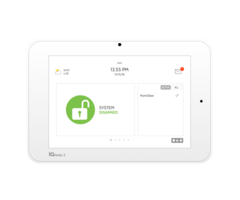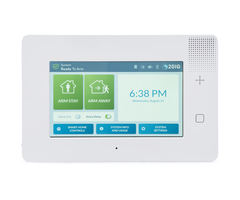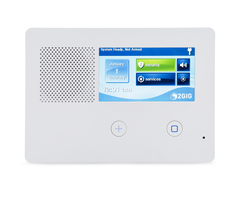New Process for Setting Up MyAlarms.com Account
PostedAlarm Grid customers who receive central station service through CMS can now follow a new process for setting up an account with MyAlarms.com. This process is more streamlined, and it makes it much easier and more convenient to get started. Now is a great time to build a MyAlarms.com account!

If you are not familiar with MyAlarms.com, it is a service platform available for those receiving central station service through Criticom Monitoring Services (CMS). Criticom is the official central station partner of Alarm Grid. All of our customers who receive central station monitoring service for homes and/or businesses in the United States are protected by CMS.
By using MyAlarms.com, you can access your personal account to put your system on test mode, view your account information, and access your signal history, all without having to call CMS. This is extremely convenient, and it helps CMS to keep their lines free for real emergencies that require immediate attention. We very strongly recommend using this complementary service if you receive central station service through Criticom.
To get started with MyAlarms.com, the first thing to do is visit the MyAlarms.com website and click on the "Create New User" button at the bottom. Next, you will need to provide both your CS#, which is your unique number associated with your CMS account, as well as your false alarm passcode. Remember that your false alarm passcode is the secret verbal code you use to tell a central station operator that everything is alright in the event that they call you.
If you need to obtain your CS#, then you should call Alarm Grid at (888) 818-7728 and choose option [9] to be automatically re-routed to CMS. From there, CMS will ask you for both your monitored address and the false alarm passcode on your account. They will then be able to provide you with your CS#. We recommend keeping your CS# and storing it in a safe location. Remember, you can call Alarm Grid and choose option [9] to be re-routed to CMS at any time. It does not need to be during our normal business hours. CMS is 24/7/365.
After providing your CS# and your false alarm password, you will then need to build your user account. This will include choosing a user name for logging in, as well as providing your first name, last name, and email address. Once you click the "Create" button after that, your user account will be successfully created. You will then receive a confirmation email at the email address you provided. Click on the verification link, and use the temporary password to log in. You will then be ask to set a permanent password for your MyAlarms.com account.
Once you have built your MyAlarms.com account, you can use your username and password to perform all of the aforementioned activities. This should be your go-to spot for all things related to your CMS account. Most notably, this is the easiest and best way to put your system on test mode when testing your system. Alarm Grid recommends testing your. system once a month. So make sure to take advantage of this awesome resource!
If you have any questions about MyAlarms.com, or if you are interested in signing-up for Alarm Grid monitoring service, please email us at support@alarmgrid.com. Our team is happy to help you get started! We check our email during our regular business hours of 9am to 8pm ET M-F. We look forward to hearing from you!





 This week's videos are centered around the
This week's videos are centered around the 





